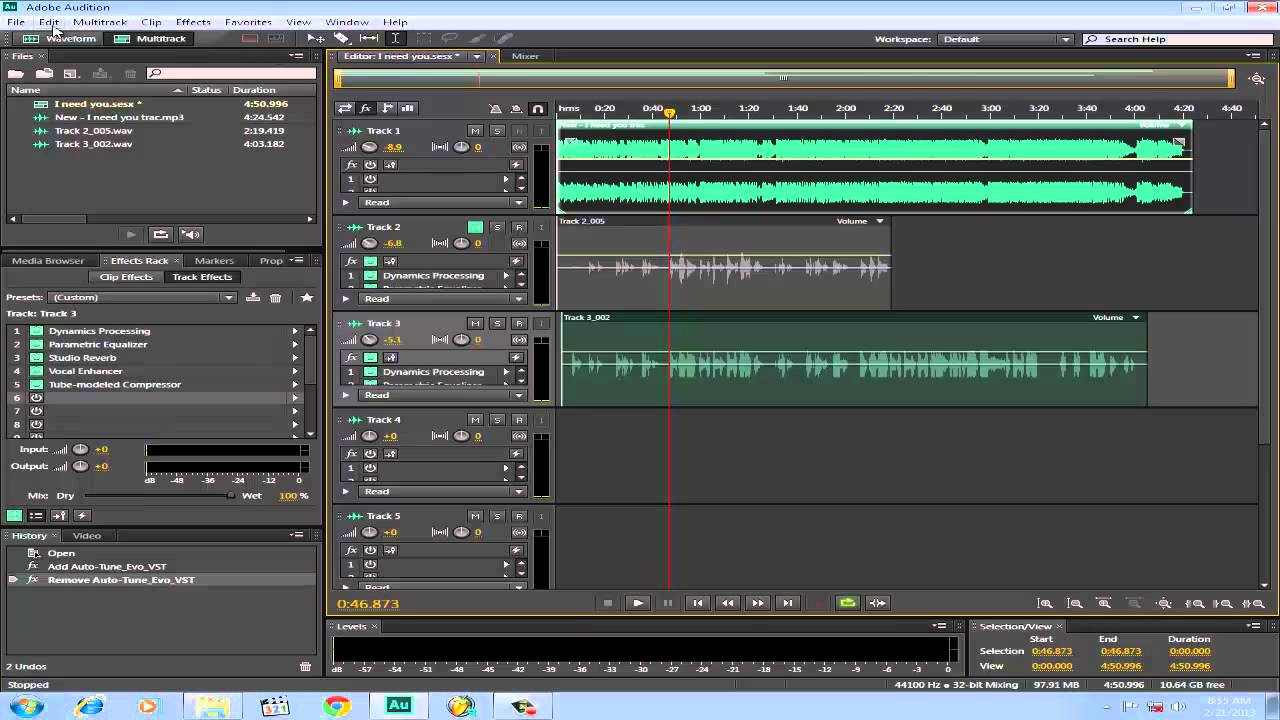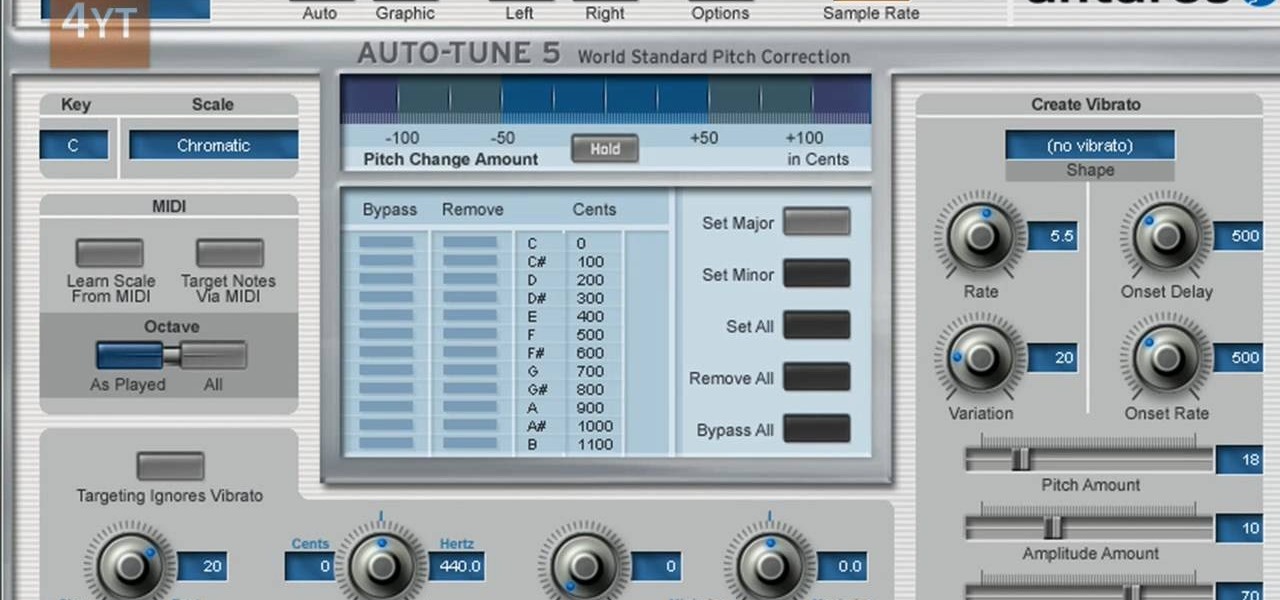Robot Vst Plugins Adobe Audition
In this brief guide, we've shared how to install VST in Adobe Audition, so you can take advantage of virtually any audio plug-in on the market. Short for 'Virtual Studio Technology', VSTs give you access to thousands of third-party plug-ins online, and many of them are free to download. |
Related Articles

Audition CC 2017 is having trouble finding my VST plugins that I have installed, absolutely nothing is found when I have the Audio Plugin Manager scan a VST folder. I have made absolutely sure that the VST plugins are x64, and have tried installing them through the original Audition Plug-ins folder, as well as a custom VSTplugins folder I made. ReaEQ equalizer VST plugin is one of the best free plugins for music producers. Its a graphic equalizer plugin with lots of features that you generally get with a paid VST plugin. Here are some features of ReaEQ. This IR based equalizer has Unlimited bands.
Aqui os dejo el link de descarga de 7 plugins adobe audition para editar la voz de canto o de locutor link mega http://adf.ly/1ltvzF. MegaVST is a free VST plugins archive, download free audio plugin for musician or sound engineer. We allow you to download freeware VST, both audio effects and virtual instruments (VSTi). This plugin can be used in audio software (DAW) that supports VST including: Steinberg Cubase, Nuendo, FL Studio (Fruityloops), Ableton Live, Adobe Audition, etc. Just thought I would ask if anyone had recommendations for VST plugins for Audition 3.0. Any great effects out there I should be aware of. Prefer freebies but will have a look at ones you have to pay for. Audition CC only supports 64-bit VST plug-ins. So if your plug-ins are 32-bit only then they won't work. Audition CS6 supports 32-bit plug-ins natively since it is a 32-bit application. For VST and VST3 effects they have to be the 64bit versions to work in Audition CC2017. Make sure that in Audition's Plugin Manager that the correct folders are selected where your plugins are installed. However VSTi (VST Instrument) plugins won't work in Audition. Only VST effects plugins are compatible with Audition.
What's covered
- Support policy
- VST plug-in handling
- Troubleshooting steps
Support policy
Effects plug-in support is limited to plug-ins that are included with the Adobe Audition CC installation and the VST and Audio Units technologies as they are implemented within the application. Adobe technical support does not support problems due to the use of third-party plug-ins. If a third-party plug-in directly causes problems, please contact the plug-in manufacturer for support.
VST plug-in handling

Adobe Audition supports third-party 64-bit audio plug-ins in VST 2.4, VST 3.0 formats for macOS and Windows, and Audio Units for macOS. Note: VSTi and virtual instrument synthesis plug-ins are not supported at this time. To locate plug-ins or manage their visibility in the application, use the Audition Audio Plug-In Manager. From the Audition menu bar, select Effects > Audio Plug-In Manager. Here, you can add new folders if you’ve installed VST plugins to custom locations, Scan for new plug-ins, or manage which audio plug-ins are available inside the application.
VST 2.4 plug-ins typically get installed to
Windows: C:Program FilesSteinbergvstplugins
macOS: /Library/Audio/Plug-Ins/VST/
VST 3.0 plug-ins are strictly installed to
Windows: C:Program FilesCommon FilesVST3
macOS: /Library/Audio/Plug-Ins/VST/
Audio Units plug-ins are strictly installed to the path below, and are registered with the OS:
macOS: /Library/Audio/Plug-Ins/Components
You should only need to add folders if you have installed VST 2.4 plug-ins to a custom location. Otherwise, Audition would populate the folders list with the default locations.
Click the Scan for Plug-Ins button to search for new plug-ins on the system.
Note: Audition will scan and attempt to open each plug-in in a separate process. Plug-Ins which cause a crash, or are virtual instruments, will be marked as disabled.
After plug-ins have been scanned, they are available in the Effects menu. Near the bottom of the menu dropdown are 3 items: VST, VST3, and AU.
VST: Contains VST 2.4 plug-ins which are organized by manufacturer. For instance, all plug-ins by iZotope will be in a flyout submenu labeled “iZotope”
VST3: Contains VST 3.0 plug-ins which are organized via their internal metadata. For instance, noise reduction plug-ins might be in a flyout submenu labeled “Restoration”
AU: Contains Audio Units plug-ins (macOS only) which are organized by manufacturer. For instance, all plug-ins that ship with macOS are in a flyout submenu labeled “Apple”
Troubleshooting steps
Robot Vst Plugins Adobe Audition Plugins
To benefit most from this document, perform the tasks in this section in order. Keep track of the tasks that you perform and the results of each, including errors and other problems. Adobe Technical Support can use this information to better assist you if you need to call.
Note: The procedures in this document are based on the default interface of Windows XP. If the interface is customized, some procedures may vary. For example, a commonly encountered difference is the navigation to Control Panel from the Start menu: You may navigate Start > Settings > Control Panel instead of Start > Control Panel.
1. Restart Adobe Audition and deselect the plug-in from the VST plug-in manager.
Stability issues can arise if a plug-in fails to initialize properly. The Audio Plug-in Manager lists all the plug-ins that Adobe Audition has scanned and allows you to turn each plug-in on or off.
To disable a plug-in that caused Adobe Audition to freeze during startup:
1. Restart Adobe Audition
2. Open the Audio Plug-in Manger from the Effects menu
3. In the list of plug-in files find the plug-in from step 1 and uncheck the box next to it.
4. Click OK.
Note: For more information about managing plug-ins see the 'Managing audio plug-ins' section of this document.
2. Run the plug-in in a session with a lower sample rate.
Adobe Audition can record, process and playback most hardware supported sample rates (normally up to 196k); however, not all plug-ins were tested or designed for high sample rates. Editing and mixing sessions at high sample rates while incorporating plug-in effects can cause a significant drop in the performance of Adobe Audition or may cause Adobe Audition to crash. If you mix audio in the multitrack or use the mastering rack with files or sessions that are over 48k (48000 samples) and notice problem, then test the plug-in at a lower sample rate.
To check the sample rate capability of the plug-in:
1. In Multitrack Main view, select File > New Session.
2. Choose 48000 in the New Session dialog box.
3. Import an audio file and place it on track 1.
4. Add the effect that you want to test.
5. Play the session.
If the plug-in performs as expected at 48k, then consider finding another plug-in to take its place, or lowering the sample rate of files or sessions.
3. Temporarily disable plug-in automation.
Temporarily disable automation for individual tracks that have effects to test if effects automation is causing the problem. Within the Multitrack view, you can create new automation lanes for any available effect parameter. Not all plug-ins were tested or designed for automation and can cause a significant drop in the performance of Adobe Audition, or may cause Adobe Audition to crash.
To disable plug-in automation:
1. In Multitrack view, locate the track that has effects automation.
2. Change the Track Automation Mode to Off.
3. Play the session.
If the session plays as expected without automation, then consider replacing the plug-in with a similar plug-in, or enable Pre-Render the track.
For more information about
For more information about freezing tracks see Pre-render track effects to improve performance.
Adobe Audition 1.5 Vst Plugins
Jogi közlemények Online adatvédelmi nyilatkozat